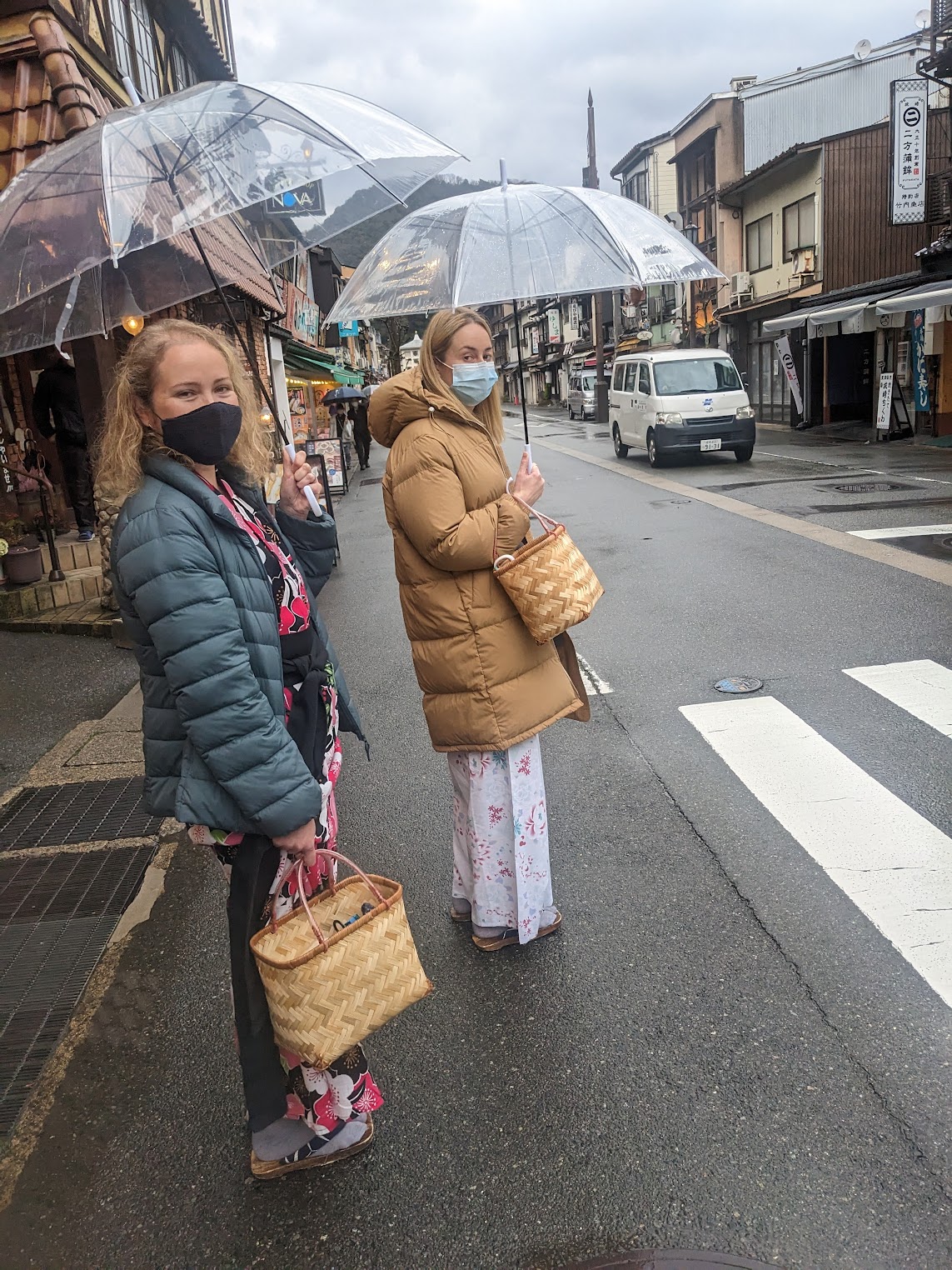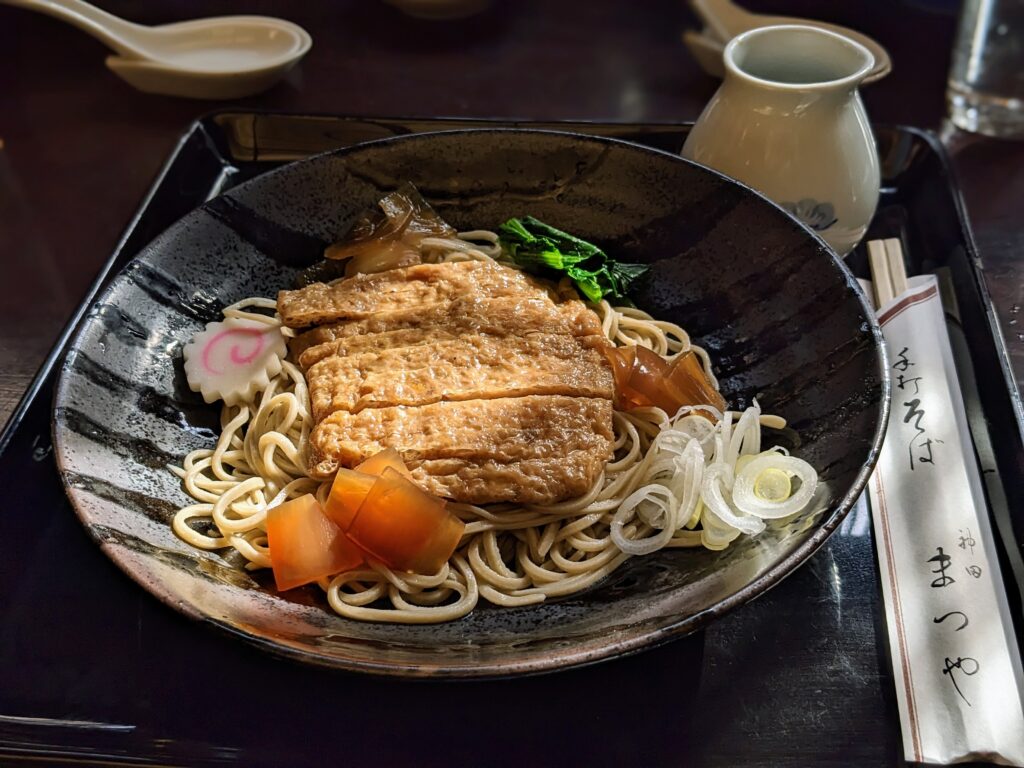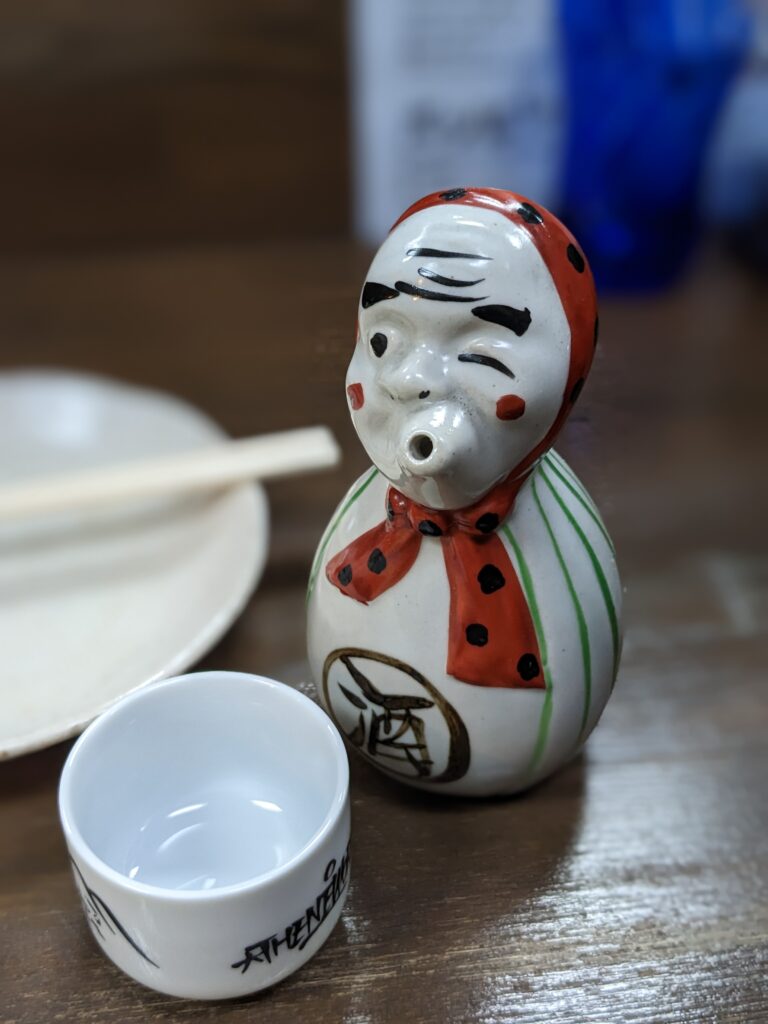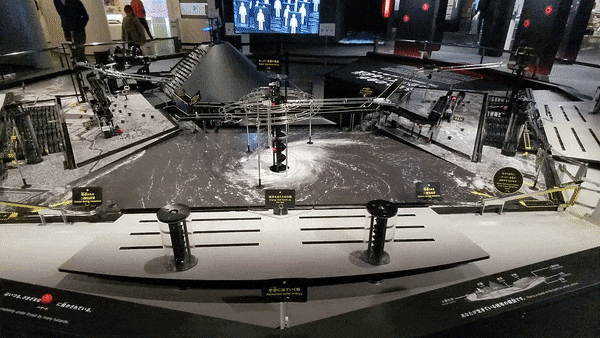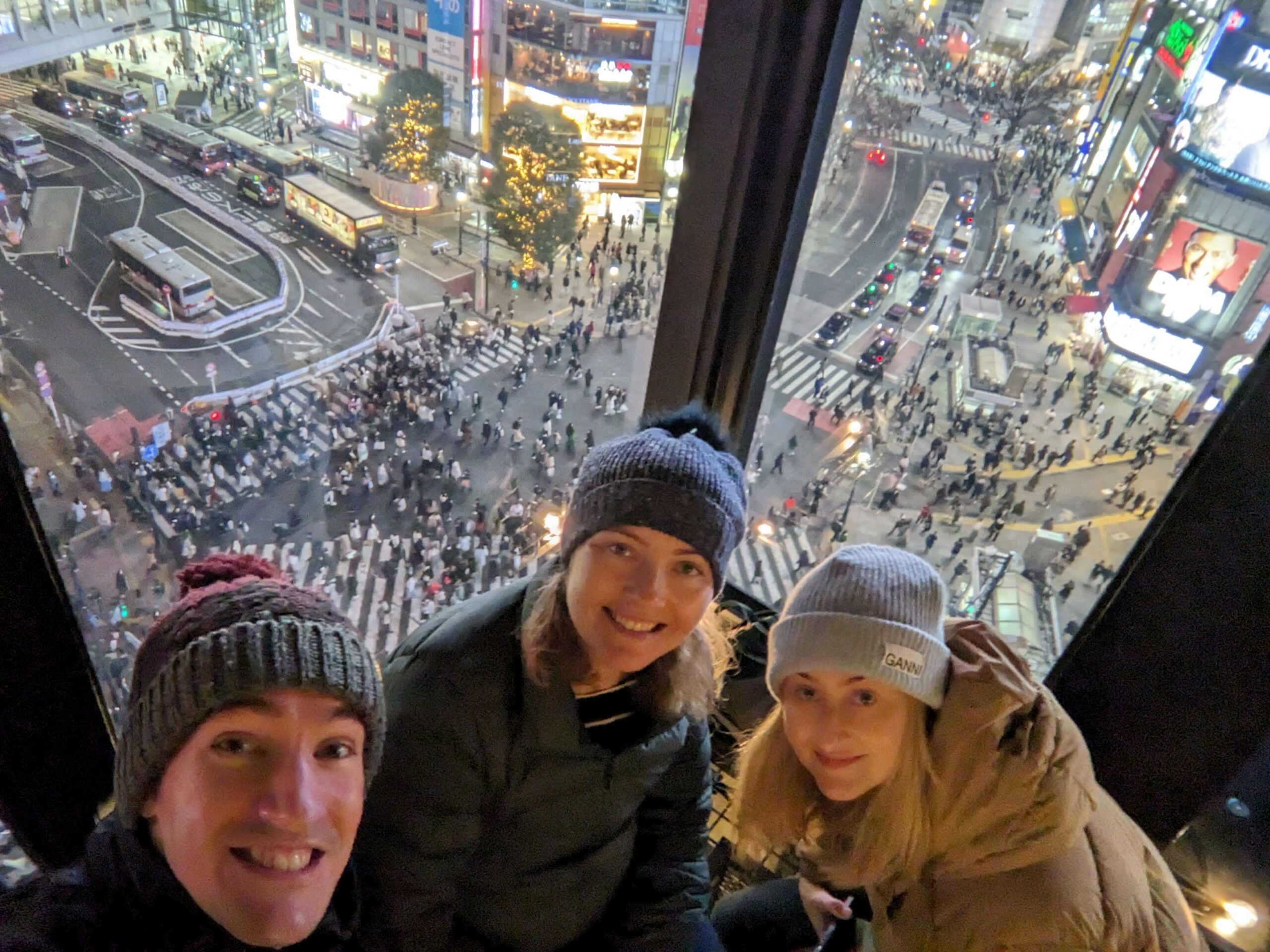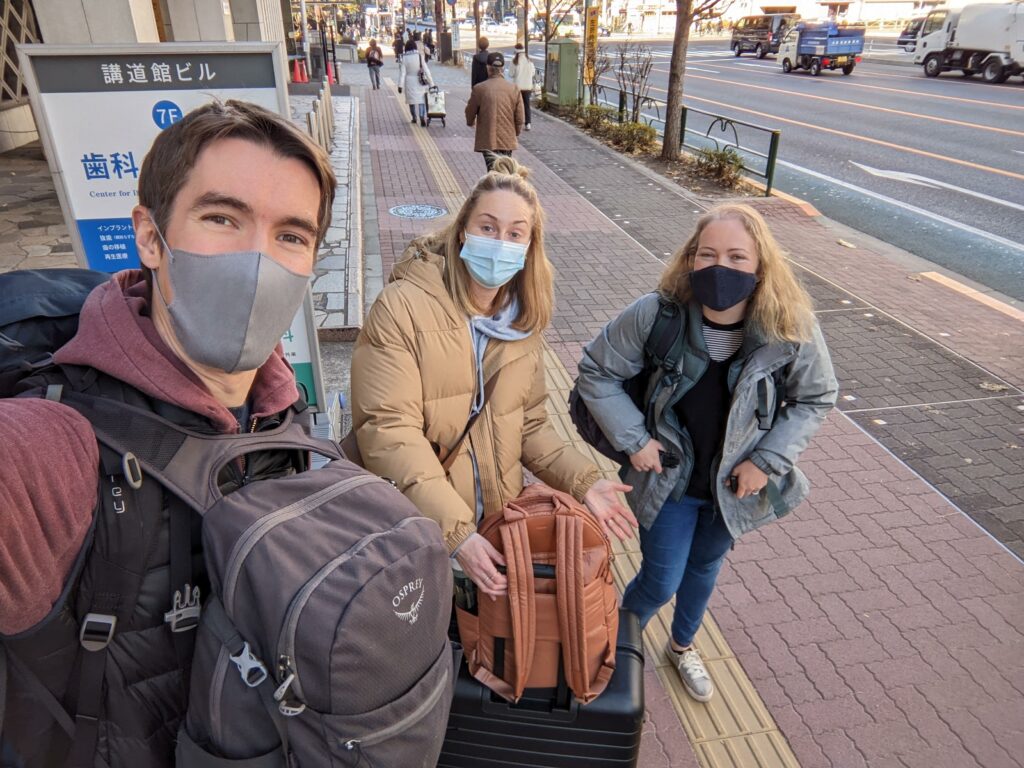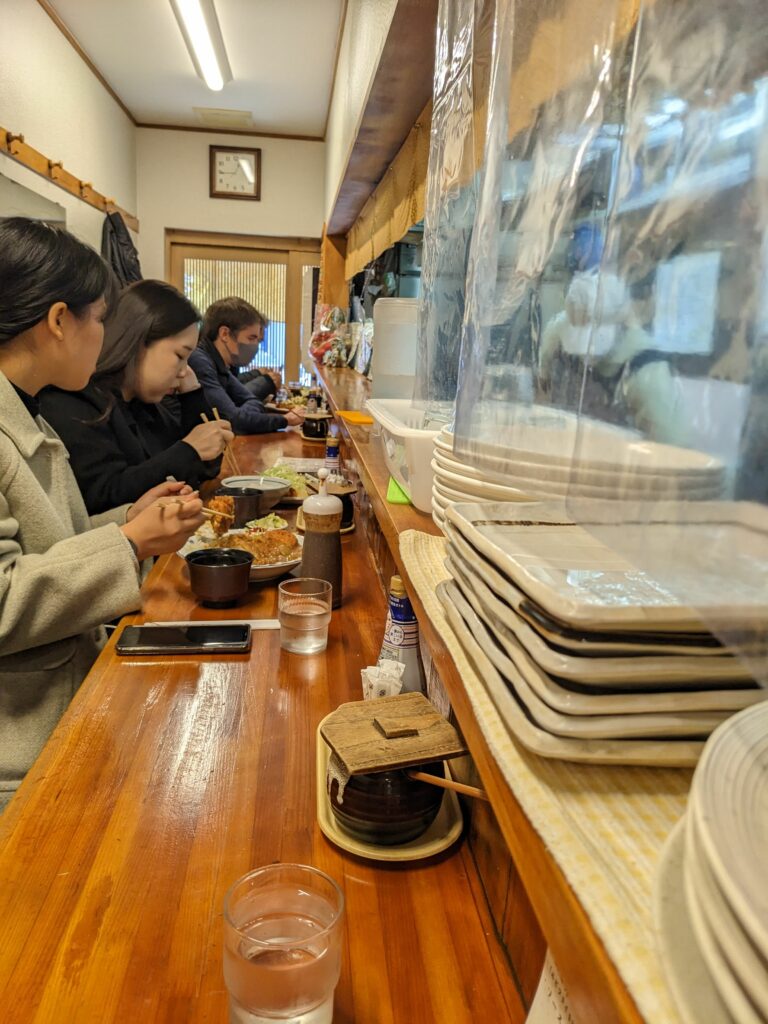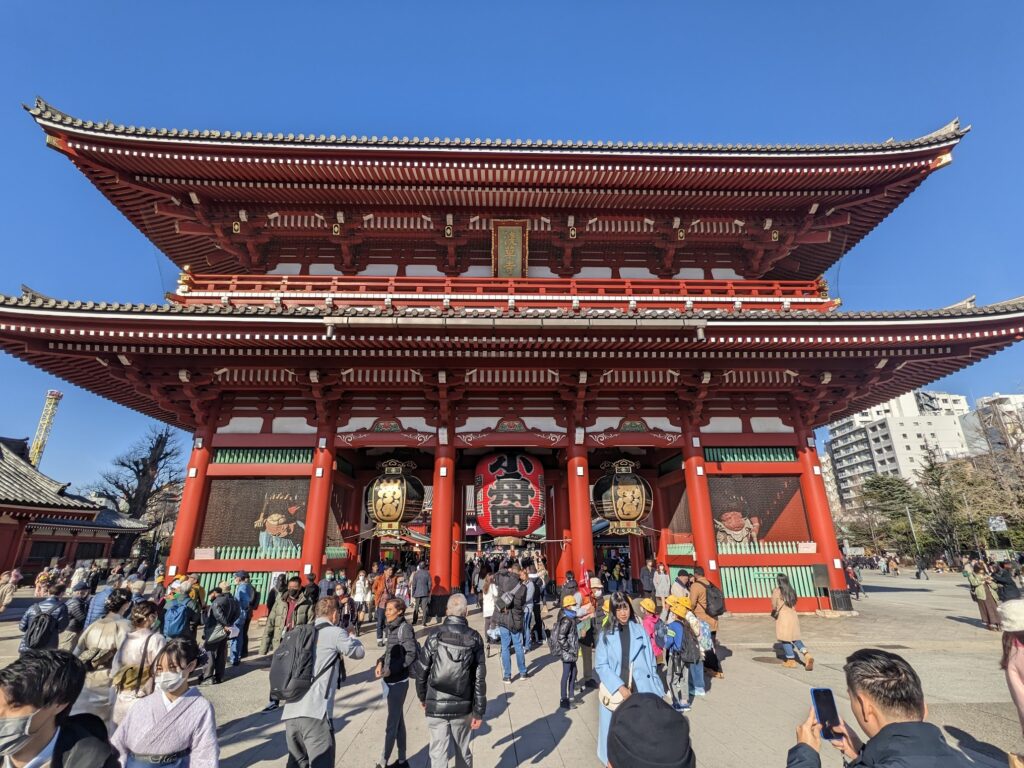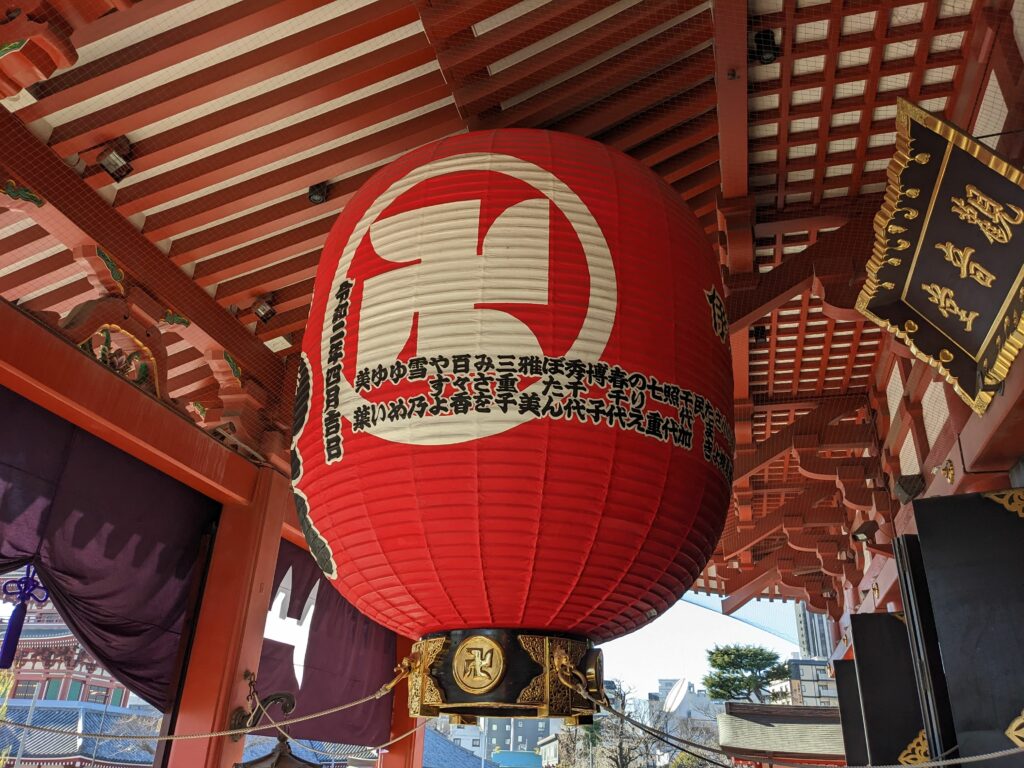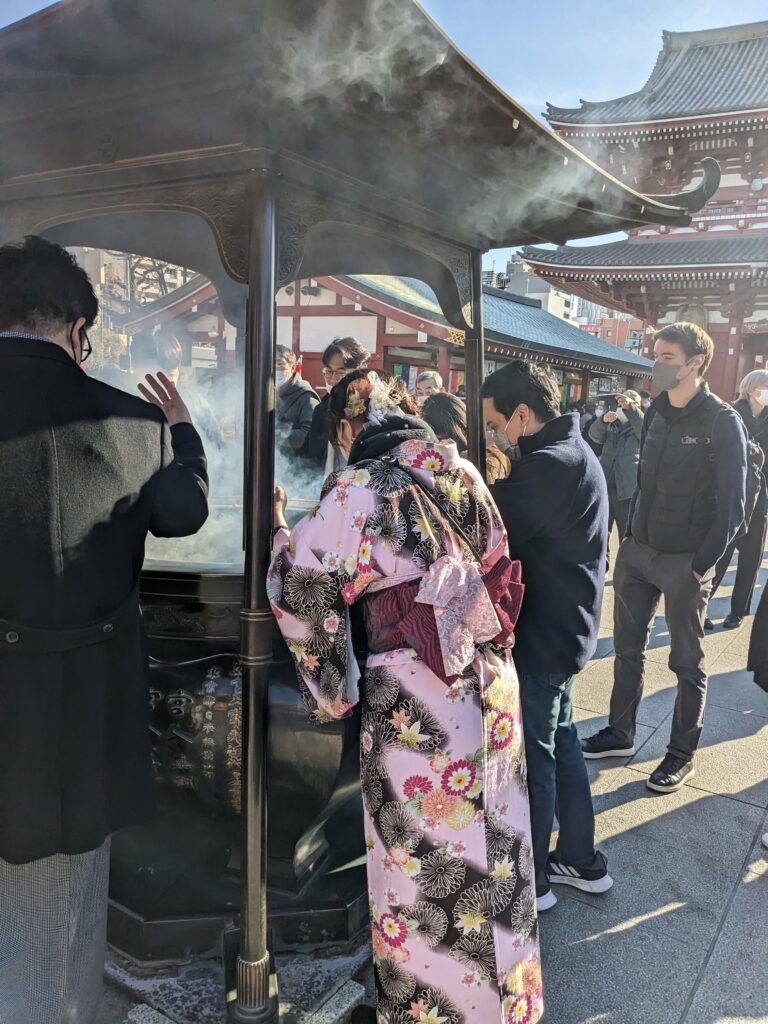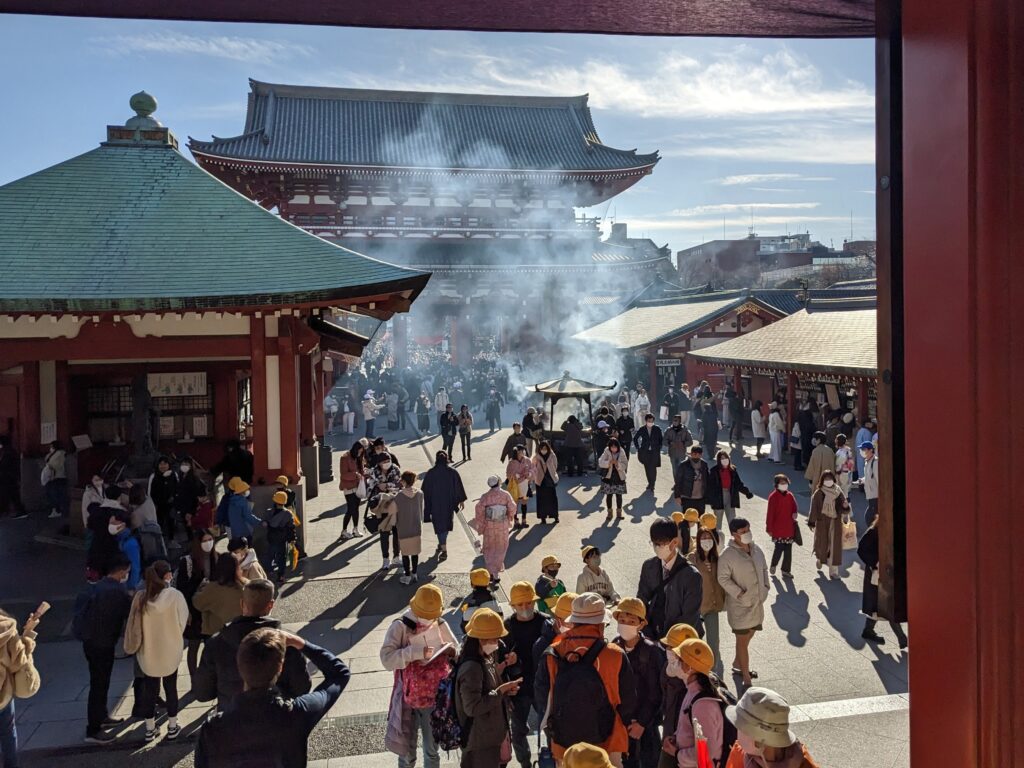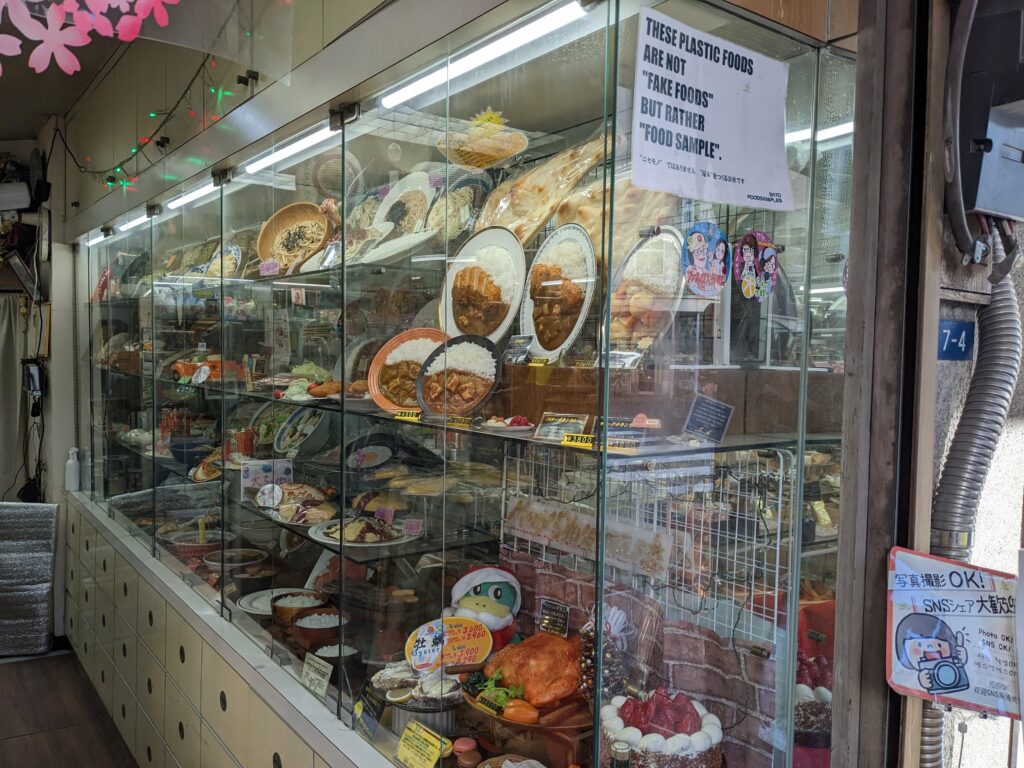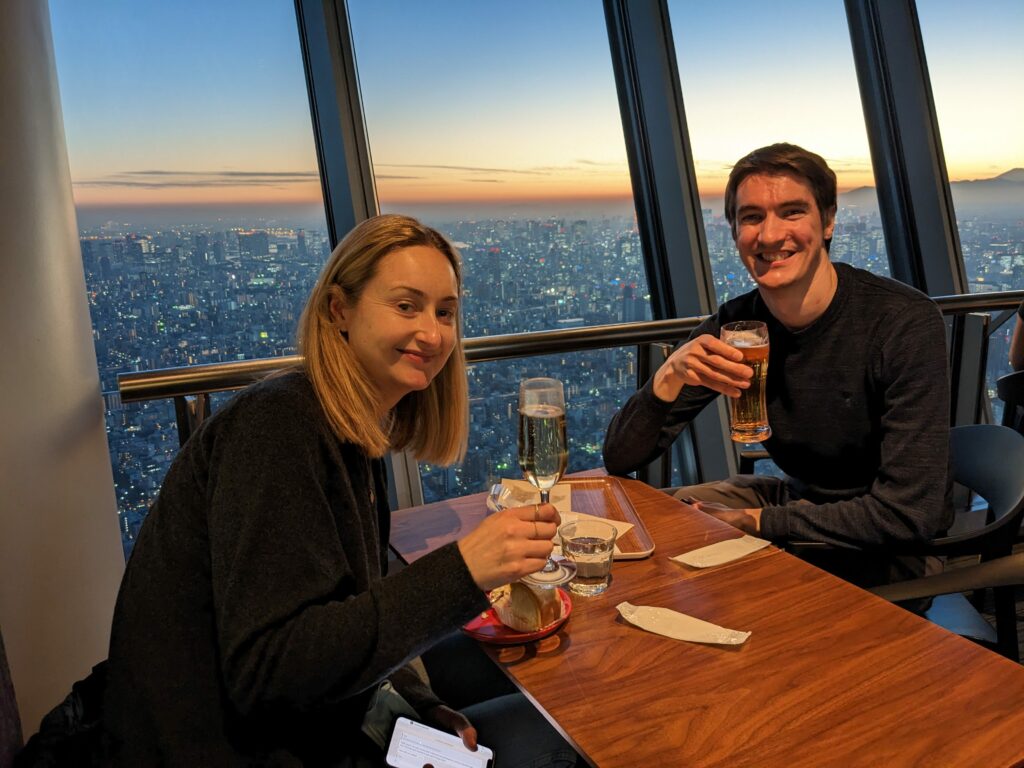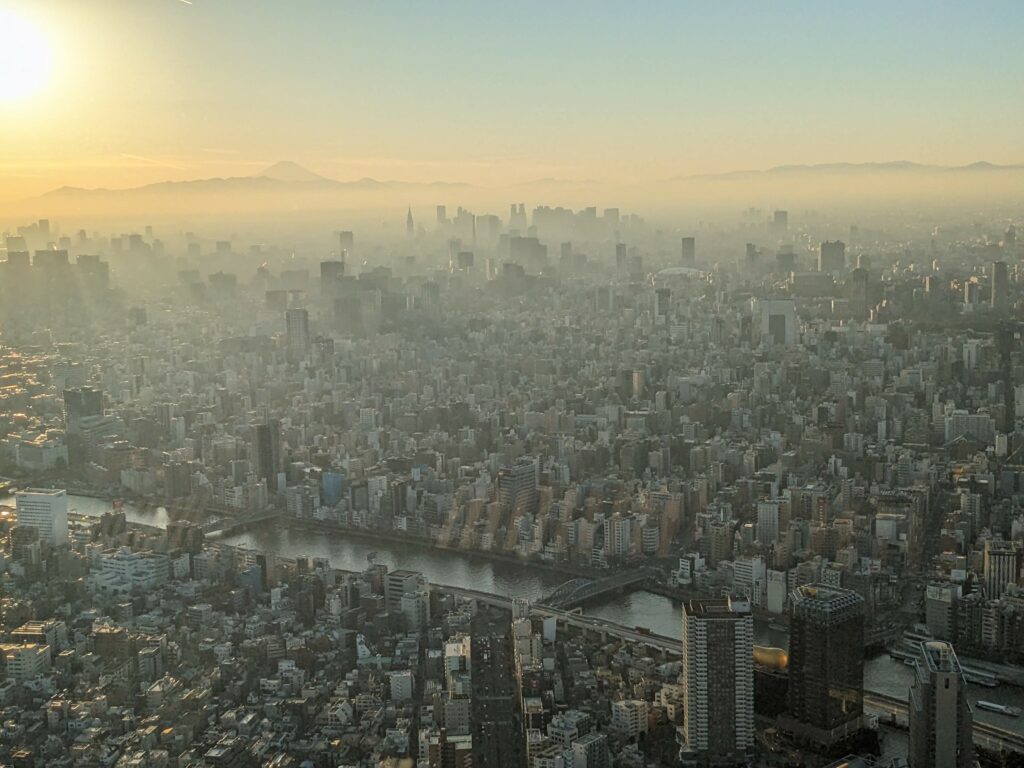When we were planning our itinerary with Katie, she mentioned that she’d like to visit an onsen. As if I needed any excuse! I decided it was about time we went all out and visited a whole town dedicated to bathing, and so we picked Kinosaki Onsen as our next stop. This is a small town in northern Kansai that offers an all-you-can-bathe pass for its seven public bath houses fed from a natural hot spring.
As soon as we arrived on the train from Kyoto, we got stuck in. We’d read that there were free foot spas dotted around the town and we found one in the cafe below our accommodation, which was a great warm up for the afternoon’s activities (combined with some canelé and – oddly enough – Costa coffee).
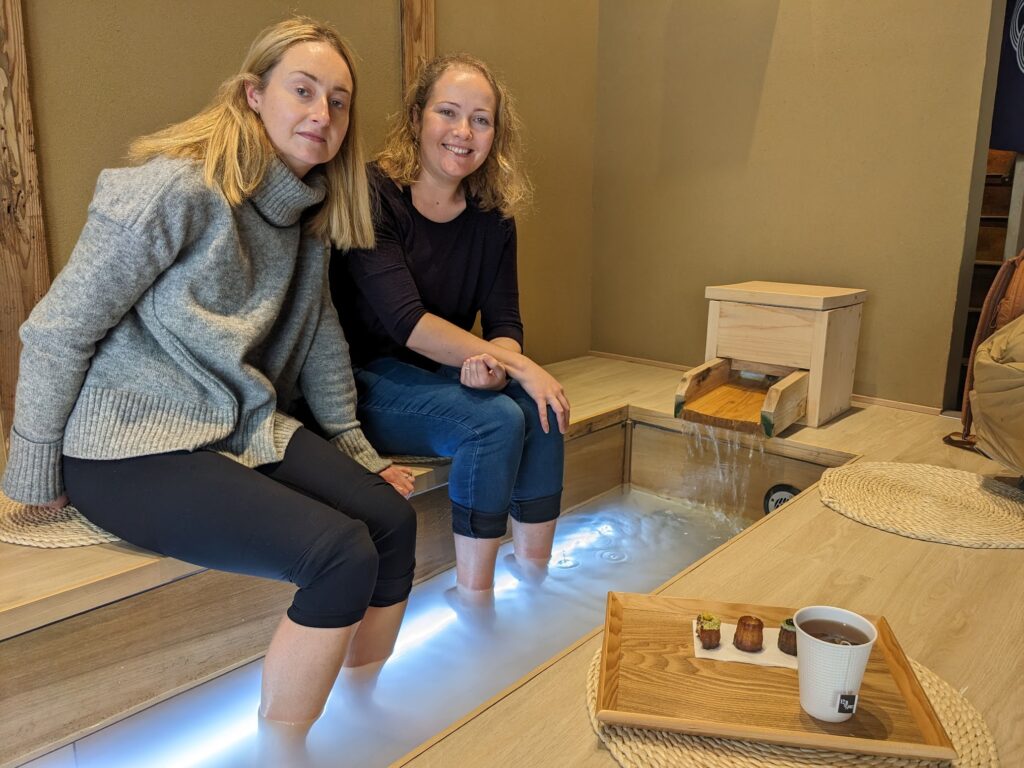
The next step was to get dressed in the appropriate attire for visiting the baths, and handily enough, our accommodation had a whole room of yukata for us to choose between and borrow for the day. Oli went all out in a navy ensemble and looked totally splendid. When he added the straw handbag also provided by our hotel, he looked a bit like he was off to market, at which point Katie and I totally lost it! To be fair, it turned out that he’d got his outfit absolutely right and no one gave him a second glance – except me and Katie, who were still struggling to regain our composure as we shuffled down the street in our tabi (toe socks) and geta (wooden shoes).
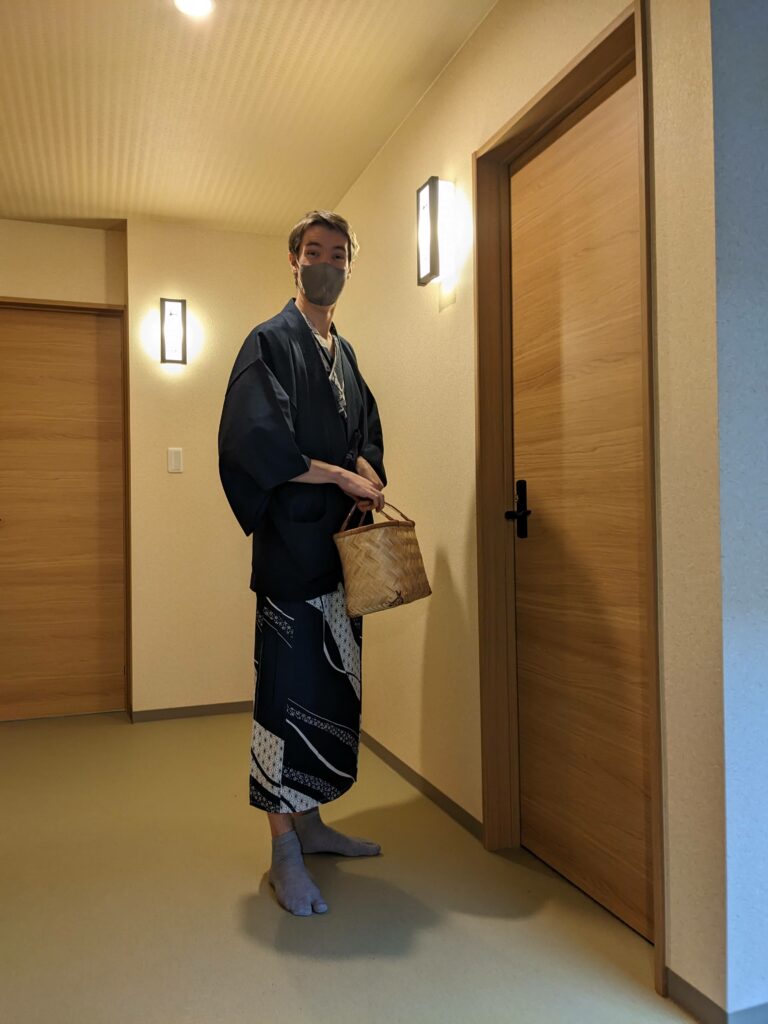
The town itself was really pretty, centred around a canal lined with willow trees and traditional buildings. First, we visited Satono Yu Onsen, the biggest of the public baths, which had several pools and saunas inside and an outdoor bath on the roof. Next, we turned what should have been a quick ten-minute walk to Goshonoyu Onsen into a soggy half-hour epic through the rain – we certainly didn’t have Geisha-level skills in walking in our yukata and geta! Thankfully, it was worth the wobbly and puddly walk because this onsen had a really pretty set of outdoor baths in a waterfall (sadly no photos as there were lots of naked people around).
After these two baths (which were SO hot), we were ready for a break and decided that it was time for an early dinner, as the town seemed to be rapidly closing for the night. Unfortunately, we couldn’t turn the tide and by 6pm everything was shut! We had to resort to a supermarket sweep in a convenience store and then Oli and I hosted a very sophisticated dinner party (with beer, thankfully) in our room. So, no snow crab for us (the local winter speciality). We’re still not quite sure what happened! Everything we’d read suggested that Kinosaki Onsen was more lively than most onsen towns, and this was peak season. Oh well, you win some, you lose some…
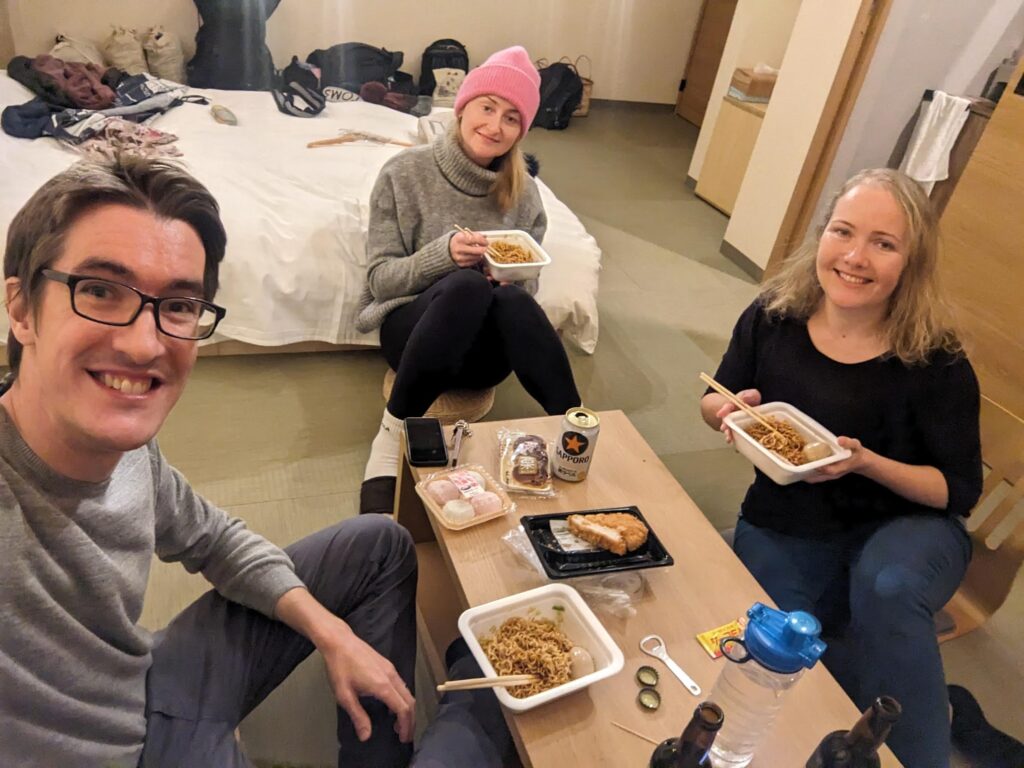
After our actually-quite-tasty dinner, I was determined to get my money’s worth from my day pass to the baths, so I headed off for a solo late-night soak at Kounoyu Onsen. This had a beautiful outdoor bath surrounded by trees, and walking there and back was really atmospheric with steam rising from around each bath house and couples walking together through the quiet town in their yukata.
Not to be outdone, Oli went for a bonus early-morning soak the next day at Ichinoyu Onsen, which had outdoor baths set into a cave. This sounded really cool, but his walk wasn’t quite so relaxed as he came across several warning signs for wild bears, not quite what you want to see when out alone in the early morning! Thankfully, he had a bear-free morning and we caught our train back to Kyoto without too much incident.

Sadly, this was where we had to say goodbye to Katie, as she was heading back to Tokyo to catch a flight and we were on our way to Nara to make some new friends 🦌. We had the best 10 days exploring more of Japan together – thank you so much for coming, Katie, and bringing a whole new level of organisation, water wipes and snacks to our trip! And big thanks and kudos to Andy for holding the fort at home…

